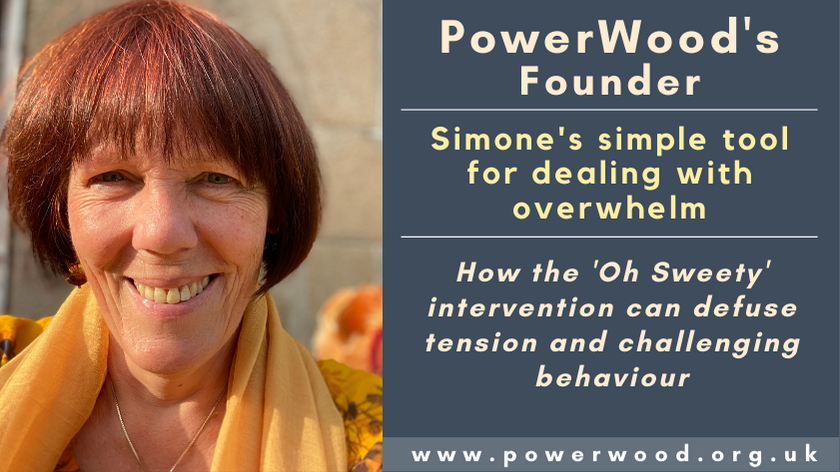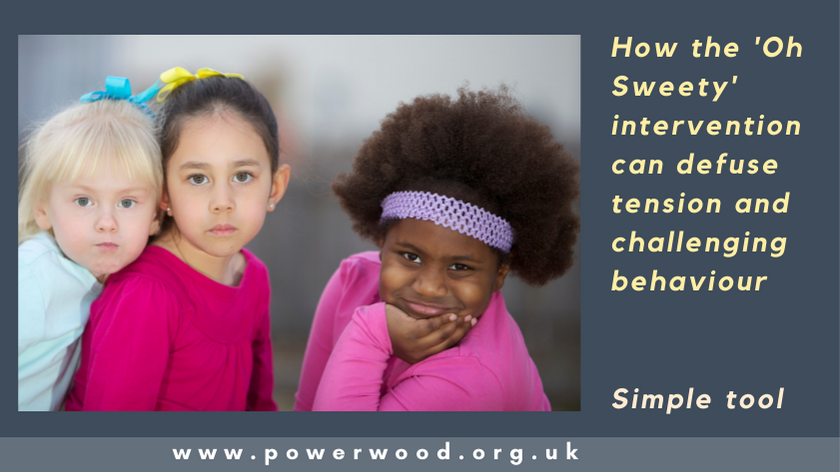
Sadly also our children will encounter challenging times.
When our children are overwhelmed and in the cycle of emotional and sensory overload they normally express their overwhelm by either internalising – for example, withdrawal, intrusive thoughts, food issues, etc ‒ or through externalising behaviour, such as being overly critical, picking a fight, lashing out, etc.
In the long run, all these narrowing behaviours can become roadblocks on our children’s freedom to develop towards being independently able to create a fulfilling life.
Although it sometimes feels like our child goes from nought to 100 in a millisecond, often there has been a build up that we were unaware of, and those instances often happen when our child is getting ill, for example, or when they have a low baseline (energy level and emotional resilience) in general.
For children who have an asynchronous development (which means that the development of the intellectual, emotional, practical and chronological age deviate from each other) the current world may pose many worrisome issues that trigger feelings of unsafety. Without the ability to find a way through these feelings intellectually or practically, our children are kept in the cycle of emotional and sensory overload continuously.
Cuddle alarm
Besides helping our child in the moment of overwhelm (which we will look at later in this blog), we can help them to strengthen their baseline by regularly setting a cuddle alarm every day that we feel the world around our child is creating extra stress and tension. Keeping our child’s baseline strong will make it more visible if they are feeling challenges. When our child’s baseline is stronger they will also have more energy and emotional resilience so if we apply a tool in a challenging situation there will be less resistance in the child.
If we, as a parent, have emotional overexcitability we will be more able to detect the build up of tension in ourselves and our children, on the other hand we may also be equally distracted by the world around us and overloaded by the feelings of others. The cuddle alarm will also help us to be calm and refocus on connection with our children and the people we love.
Setting the cuddle alarm really helps us as a parent to calmly look at our child and take notice. In this way we are able to assess when our child is building up tension and heading towards the cycle of emotional and sensory overload. This is a good moment to apply the “Oh Sweety, …” tool.

The “Oh Sweety, … “ tool explained
Our aim
What our children will learn when we apply this tool is the following
Our love is unconditional
We want our children to know now and in future that our love is unconditional, we might not like their behaviour, but we do always love them.
We believe in their goodness
We express that however our child has overstepped boundaries (e.g. being nasty, lashed out to a sibling, sworn, stolen money from our purse, shouted “I hate you”), we believe in their goodness and we see this mishap as a tiny, tiny glitch in the bigger picture of our child’s personality. Like our own glitching, the behaviour does not represent how they really are.
Our child must be feeling low
We don’t take it personally nor seriously because we know our child only behaves like this when they are feeling really low (and we have all been there).
Our child learns what it needs to ask for when low
We model to them there are tools to help ourselves when we feel lousy. This helps teach them that when they feel like this again, they can come to ask our help to calm down. This is a lifelong important strategy, when they are grown up they can ask a partner for what they need to calm down. In this way, they learn that they don’t have to repeat the behaviour.
How to apply
We apply the ‘Oh… Sweety’ tool whenever we notice that our child feels overwhelmed or we see our child overstepping their own or others’ boundaries such as lashing out externally or internally, being unkind or expressing themself in a not helpful way, etc. We intervene in the situation at our first awareness and say smilingly to our child while reaching out to them by opening our arms:
“Oh, Sweety, you must feel lousy (use the word the child uses normally to describe their upset) otherwise you would never say/do that (be as vague as possible to prevent argumentative talk). Come here we need … (what they need depends on their preference, whatever helps to soothe their feelings)!”
And we stay with our child during the execution, encouraging and/or reassuring them.
This tool also helps us parents to stay calm in a sometimes otherwise triggering situation because we know what to do and we use following a script to keep our overwhelm at bay.
What our child might need
For some children what works in the “Oh Sweety…” tool is a cuddle, for some it might be walking up and down the stairs, whatever calms the child (or yourself) down. Below you can see a list of examples that I have come across in my practice.
What a child needs to calm down is dependent on the child, the circumstances and how overwhelmed a child feels.
For example, when my daughter was about five and triggered she could well accept a cuddle and calm down. However, if I waited too long to intervene, a cuddle would only increase her overwhelm (read anger) and would have to be replaced by running up and down our lane, under loud encouragement. Cuddles also didn’t work when we were visiting others. In that situation, we would have to go for a little walk outside hand in hand.
And I would use the following script when she felt very upset at a birthday party, for example, if she had a hard time accepting she hadn’t got a present.
“Oh, Sweety, you must feel awful (her favourite word for upset), otherwise you would never do that. Come here (getting her hand and walking out of the door), we need to run three times to that tree over there!”
And I would start running holding her hand, or when I couldn’t run I would just stand there and clap my hands while shouting enthusiastically “Run, yes you can do it”, and after three times she would be able to accept a cuddle, too, and we would have a talk about whether she would like to go back in or prefer to go home.
Possible options
This is a list of examples that I have come across in my practice that parents use to try out and see if it fits. Keep in mind that what works might also change depending on the circumstances and baseline (energy level and emotional resilience) level of the child.
And remember we know our child best, and slowly and securely we will get more and more clear what works for our child.
If our child is preferring physical activity to calm down (having psychomotor OE) while also having intellectual, imaginational or emotional OE, please consider whether it would be helpful to encourage the child to use a distraction technique such as counting out loud, or saying the alphabet backwards, something that helps prevent any unhelpful train of thoughts.
Overwhelm happens mostly in the amygdala, a part of the brain that has a primary role in our emotions. All these options will help shift the brain synapses to fire off in other areas and help the child to calm down:
- TaiChi movements
- Repetitive type of behaviour e.g. sitting on a chair and swinging our upper body from the front to the back etc (also called stimming)
- Running up and down the stairs
- Jumping on the trampoline
- Snow-angel on the floor
- Dance
- Power poses (standing and/or jumping)
- Skipping for several minutes
- Pretend to be something scary, with fun roars and pounces
- Cuddle with mum, dad or friend
- Cuddle a pet
- Play with a pet
- Laugh really, really loud
- A blanket tightly rolled around the child
- A blanket very tightly tucked in with the child in bed
- Read one page in comic book
- 4-7-8 breathing exercise
- Sing a song
- Play an instrument
- Notice what our child uses to calm and add it to the list
Power of touch
If our child doesn’t like cuddles generally, or in the moment of overwhelm, make sure to touch, e.g. holding hands on the way to the stairs, so we both make bonding hormones (oxytocin), as that will help any person to calm down and is the glue in any relationship. It makes the difference between being irritated by certain behaviour or being endeared.
How to prepare
As parents, we are the context for our children. If we don’t feel good, are stressed, feel overwhelmed, we might not feel safe and that might affect our children’s feelings of security. This can even trigger their overwhelm, entering them in the cycle of emotional and sensory overload. Strengthening our own baseline, energy level and emotional resilience, is therefore a valuable preparation.
Our child or teen’s expressions as a flag-up
When our children are shouting at us “I hate you”, as my daughter often said as a child, or “You are such a bitch”, as my son frequently shouted as a teen, please realise it’s just an expression of how overwhelmed our child or teen feels (so many of our children shout things like this, and of course they do not mean it, if in doubt read Loving our children & LOVE. It doesn’t say anything about us, nor is it a reflection on our parenting.
Although it might be a challenge for us to not take it personally, it only says something about how our children are feeling. If we use that as a flag-up to apply the “Oh Sweety… “ tool it is also serving to increase both our awareness of how our child is expressing themselves and also how it is affecting us.
“When our children were young I didn’t take the time and energy to stop what I was doing and be there for the children when they were expressing the early signs of tension building. I just wanted to finish what I ‘needed’ to do. Consequently, my daughter would increase her behaviour, such as chattering increasingly loudly. I couldn’t hear myself thinking at all anymore and would feel more and more overwhelmed, and my son would very silently just vanish.
I realised that in the early stages of such a situation I was already irritated and that I could use my own irritation as the flag-up that something was off with one of the children. Whenever I felt irritated by something the children were doing, I would drop whatever I was doing and apply the “Oh Sweety, …” tool.” Simone
Besides using our own emotional reaction as a flag-up, we can also play the detective and keep a close eye on our children. When we notice that our child is expressing themselves in a way that makes us think it might be caused by stress or a lack of safety, we are able to step in as early as we can with the “Oh Sweety …” tool preventing any unnecessary escalations.
We can keep an eye on their facial expression, do they look worried, unhappy or angry often, is our child more quiet than normal, is anything off?
Does our child wake up in an unusually bad mood and have a bad start? During the night we often subconsciously process our fears and worries through dreams, nightmares or night terrors that might awaken us exhausted and agitated.
Has anything happened that might have upset them, has anything happened at school, during the sleepover, while playing in the park with friends?
Contingency plan for the parent
Imagine we have only slept four hours, feel exhausted and we hear our two children starting a fight in the room beside the one we are in. Sounds familiar? To me it does…
If we as the parent or carer feel we do not have the energy to react constructively, or feel triggered by the upset of our child, and that we cannot handle the situation in the way we would ideally like to, we can have a contingency plan ready.
Can we safely ignore it
The first port of call is to ask ourselves is it safely possible to ignore the situation?
If our seven year old is battering our four year old and we are out of energy we will have to prioritise the safety of the children over our own baseline, and we will have to intervene to provide safety to the children and find another time to support our own baseline.
If yes we can safely ignore it, go for it, move away from the situation, don’t look in their direction, move further away, so our children are less inclined to be focused on the audience (us) and play up the fight. Pretend you don’t hear them, and let them fight it out themselves and focus on your own baseline, energy level and emotional resilience.
Emotionally move away
If we don’t manage to ‘ignore’ the behaviour in our child, e.g. they were already in the same room, we just pretend we’re emotionally not with them, expressing we have more important things on our mind, we say something like, with huge emotional upset expressed on our face,: “Oh holy moly, I forgot to call/write an email the bank/ to get the pie out of the freezer (or whatever important will impress them)”, and we pretend to run off and do it, while in reality applying the baseline tools.
Declare ourselves absent
Just crash the scene, let yourself fall down theatrically on the sofa, sigh loudly (ignoring their fight) and declare something like, “I’m feeling so awfully tired, I might be getting ill. Is anyone up for bringing me a glass of water?” If nobody is interested, slowly get up and move towards the kitchen/bedroom, applying all our low-key baseline tools. If they follow us, keep on asking for practical help, a glass of water, a tangerine, a book, and thanking them profusely when they do.
This way we are modelling that it doesn’t matter that we are feeling below par (and by extension not perfect) because we know how to support ourselves creatively towards a stronger baseline again.
© 2022 Simone de Hoogh, senior coach and educational and parenting consultant, and founder of PowerWood. All posts by Simone de Hoogh
Help us to continue support to all neurodiverse families and individuals
PowerWood offers to neurodiverse families understanding, simple tools and strategies that enable us to support ourselves and our children through emotional overwhelm. If you enjoy reading the articles please support PowerWood making all information available to all by becoming a PowerWood Community FreeBee or Friend member. Thank YOU!

